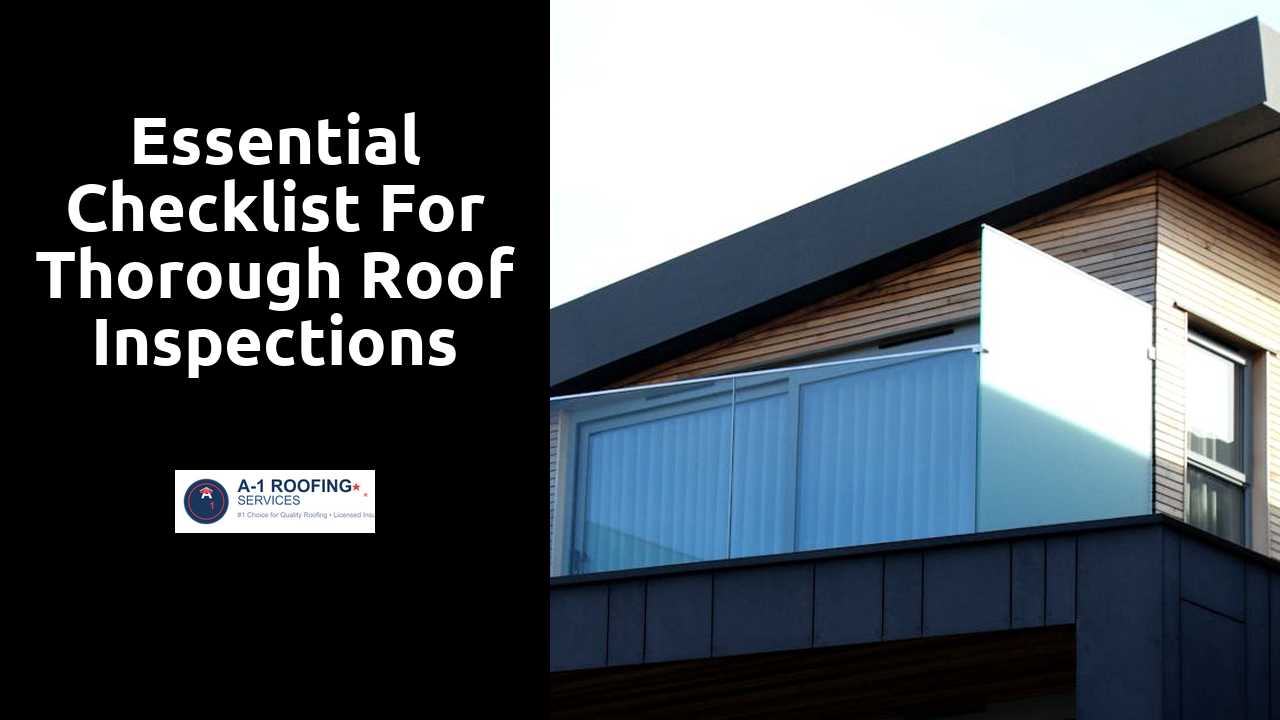
Essential Checklist for Thorough Roof Inspections
Table Of Contents
Identifying Common Roof Issues
Roof damage can manifest in various forms, each requiring careful examination. Cracked or missing shingles compromise a roof’s integrity, allowing moisture to seep through. Look for curling edges or granules collecting in gutters, as these may indicate deterioration. Another issue is roof leaks, often discovered through water stains on ceilings or walls. Noticing these signs early can prevent more significant damage and costly repairs.
Flashing issues around chimneys, vents, and skylights often lead to water infiltration. Rusting or loose flashing materials signal that a more in-depth inspection is warranted. Additionally, moss or algae growth on shingles can indicate trapped moisture, which may lead to deterioration over time. Identifying these common roof issues can assist homeowners in maintaining their property and prolonging the lifespan of their roofs.
This is an essential article for anyone looking to learn more about the topic.
Signs of Damage to Look For
Homeowners should be vigilant for specific indicators of roof damage. Curling or missing shingles can point to age-related wear or storm damage. Granules in gutters often signify that shingles are deteriorating. Dark spots or streaks on the roof surface may suggest mold or algae growth, often leading to significant structural issues if not addressed promptly.
Leaks can present inside the home, typically visible as water stains on ceilings or walls. Sagging areas on the roof may indicate compromised structural integrity. Additionally, excess moisture in the attic, detected through damp insulation or visible mold, can reveal underlying roof problems that require immediate attention. Recognizing these signs early can prevent more extensive damage and costly repairs.
When to Schedule a Roof Inspection
Regular roof inspections are essential to ensure the longevity and health of a roofing system. Homeowners should consider scheduling inspections at least twice a year, typically in the spring and fall. These seasons provide an opportunity to assess any wear and tear caused by winter weather or summer storms. Addressing issues early can prevent more extensive damage and costly repairs later on.
In addition to biannual inspections, it is wise to schedule a roof evaluation after significant weather events. Heavy rains, hail, and strong winds can compromise the integrity of a roof. Concerns about potential leaks or structural damage should prompt immediate inspections. Keeping a vigilant eye on the roof's condition can save homeowners time and money in the long run.
Seasonal Considerations
Different seasons bring specific challenges that can affect the integrity of a roof. During winter, heavy snowfall can lead to ice dams, which prevent proper drainage and cause water to back up under shingles. Spring often brings intense rainfall, increasing the risk of leaks that may go unnoticed until significant damage occurs. Monitoring these seasonal effects is essential for maintaining a strong roofing system.
As summer approaches, exposure to intense sunlight and heat can cause materials to warp or deteriorate. Autumn winds can deposit leaves and debris in gutters, which may contribute to drainage problems if not cleared promptly. Understanding these seasonal impacts can guide homeowners in scheduling timely inspections, helping to prevent minor issues from escalating into costly repairs.
Documenting Inspection Findings
Thorough documentation during a roof inspection is essential for understanding the current state of the roof and planning necessary repairs. Each finding should be recorded in detail, noting specific issues, their locations, and any contributing factors. Photographs can provide visual evidence of problems such as cracks, leaks, or missing shingles. Alongside written notes, these images enhance the clarity of the report and serve as a valuable reference for future inspections or potential buyers.
The creation of a detailed report not only helps in immediate assessments but also supports long-term maintenance strategies. It can guide homeowners in prioritizing repairs and allocating budgets effectively. Additionally, documentation serves as a record for insurance purposes and may be beneficial during property sales. Clear, organized reports help convey the urgency of repairs to contractors and ensure that essential issues are addressed promptly.
Importance of Detailed Reports
Detailed reports serve as a vital reference for homeowners and contractors alike. They provide a comprehensive overview of the roof's condition, highlighting any areas of concern that require attention. Having a documented history allows for better planning regarding maintenance and potential repairs. It also helps in tracking changes over time, making it easier to assess whether issues are progressing or being effectively managed.
In addition, these reports play a crucial role when it comes to insurance claims and real estate transactions. Insurers often require evidence of a roof's condition before approving claims. For prospective buyers, a detailed inspection report offers peace of mind, validating the condition of the roof and its accompanying warranties. Such transparency can enhance trust between buyers and sellers, fostering a more straightforward negotiation process.
Related Links
The Importance of Regular Roof InspectionsCommon Issues Found During Roof Inspections